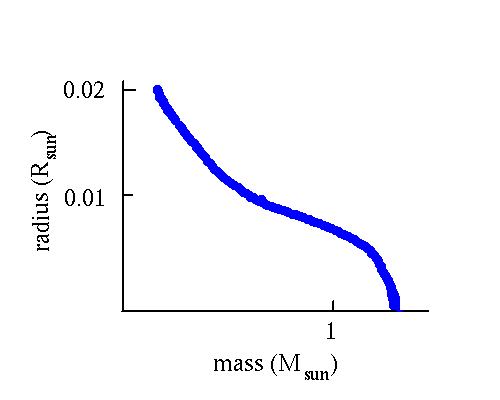
What can be the final stable state of a star core? This is a question for theoretical analysis. Once we figure out where a star can get to, we can investigate how it can get there. Then we can look for the observational evidence.
For masses on the order of a solar mass, the pressure is provided
by the electrons, which don't like to be squeezed to tightly together.
The theory is rather simple. Here is a graph of the result:

The density in the center of the dead star is very high, on the order of 109 kg/m3. The temperature will typically be high too, until the star (very gradually) cools off. But the temperature doesn't matter for this graph.
Are there real objects like this?
Note that the radius of the star gets smaller as more mass is added. For a mass greater than 1.4 Msun there is no size at which the stellar core is stable. Thus there is a limit to the mass that a white dwarf can have. The limit is called the Chandrasekar limit.
[Subrahmanyan Chandrasekhar won the 1983 Nobel prize for his studies of white dwarf stars. He was born in India and worked at the University of Chicago.]
The enormous pressure of the electrons can be thought of as being due to the star trying to put too many particles in too small a space. Solution: get rid of particles.
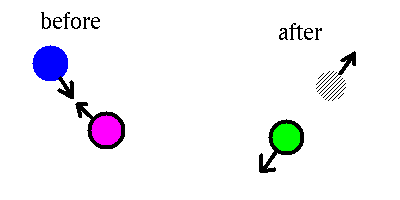
Thus we revise our picture:
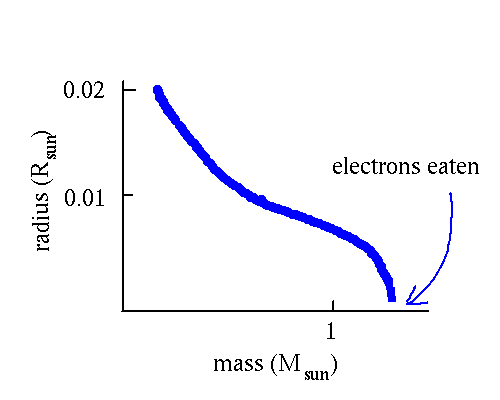
For masses above the Chandrasekar limit, we should work out what
the radius versus mass would be for a cold ball of neutrons.
Here is the result:
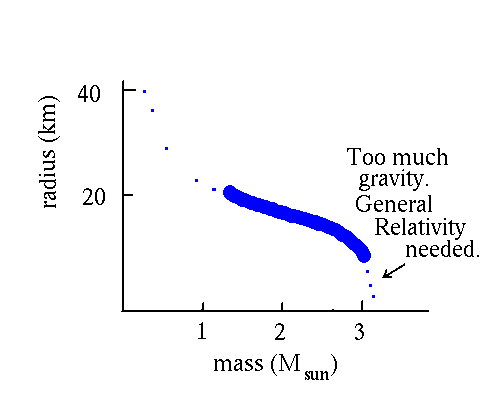
The prediction is that there should exist neutron stars with masses in the range 1 to 3 Msun and sizes about 10 km.
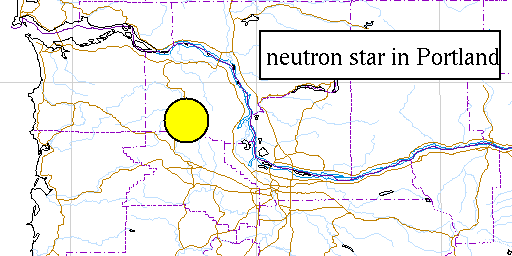
Are there real objects like this?
But to get it right, a better theory of gravity is needed. The better theory is thought to be the General Theory of Relativity (A. Einstein, ca 1918).
One feature is that gravity bends light. The more mass there is inside a small sphere, the more light is bent.
There is a limit.

What general relativity says is that if the radius of the star gets smaller than the limit (known as the Schwarzschild radius), then
What happens in theory is that the matter in the star is crushed until it is so dense that ...
Are there real objects like this?
Davison E. Soper, Institute of Theoretical Science, University of Oregon, Eugene OR 97403 USA soper@bovine.uoregon.edu